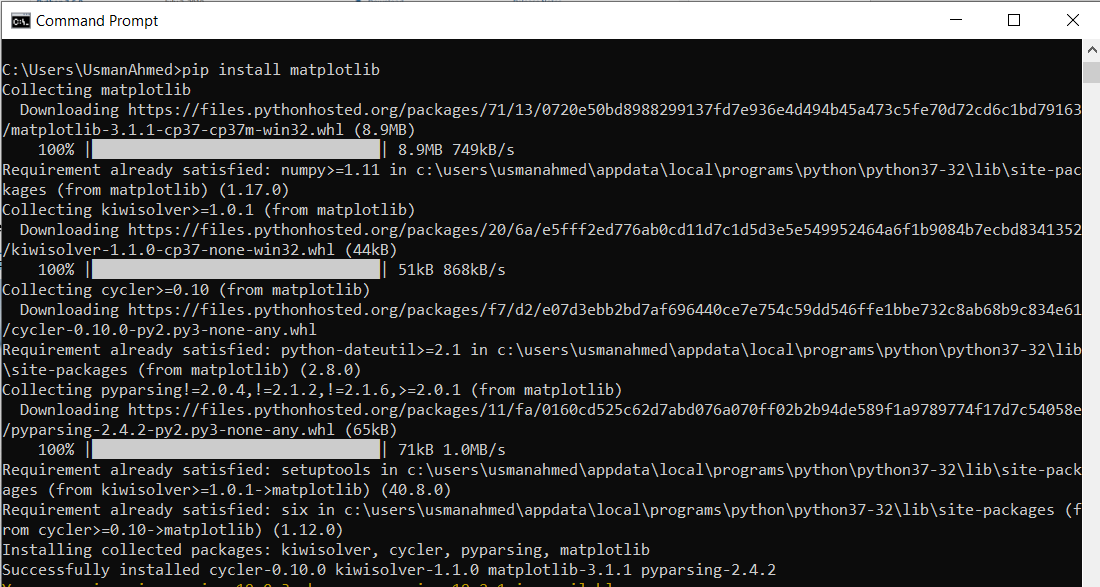

- PIP INSTALL NODEBOX HOW TO
- PIP INSTALL NODEBOX SERIAL
- PIP INSTALL NODEBOX FULL
- PIP INSTALL NODEBOX CODE
PIP INSTALL NODEBOX CODE
May 12 / Going back to the Instructables tutorial, I then adapted the Python code meant for a windows machine that, by using the 'matplotlib.pyplot' library, should plot the axis data in a graph. Please find the code under 'resources' below.

PIP INSTALL NODEBOX SERIAL
Running serialtest.py now showed the serial data in terminal. I found some code to test a serial connection and made some changes so that it applied to my situation. Next, I looked for a way to test with Python whether I could see the serial data outside of the serial monitor. I used the following Arduino code and saw accelerometer output in my serial monitor.
PIP INSTALL NODEBOX FULL
If you want to use the full range of analogue input values, the ranges should be the same. The last wire is for setting the reference, since the analog pins on the Arduino range from 0-5V, while the accelerometer ranges from 0-3V.
PIP INSTALL NODEBOX HOW TO
I found a nice Instructables tutorial on how to use Python and Arduino to plot data. Since I felt the urge to get going, I decided to connect the accelerometer to my Arduino Uno and work on generating serial data and visualizing that data with a Python interface that way. May 11 / Today the accelerometers from arrived, but the microcontrollers and resonators from Digikey hadn't yet. I made and ran several small programs through the 'hard way' tutorial, which made me quite happy. Go to the directory where Python is installed, save your program there and run it by typing python myprogram.py in Terminal.Īt first I used the text editor Textwrangler to write and edit Python code, until I found out through Massimo's tut that the Java-IDE Eclipse has many added features and can be used in combination with PyDev to serve as a Python IDE.

Installing and running programs is very straightforward in Python I found. May 9 / I spent most of today reading up and installing / setting up Python 2 and modules that seemed handy for doing datavis, such as NodeBox, Kivy, PySerial, Matplotlib and Numpy, by typing pip install pydev in Terminal. Also it often says things like "find out how to make a directory in Terminal", instead of just showing you how to do that simple thing. I particularly like Learn Python the Hard Way that also teaches you the programmer-way of thinking and doing things. Although they are definitely well made, I'm getting stuck here and there and find myself tutorial-hopping - solving one problem or unclarity with a new tutorial and then continuing in that tutorial until I got stuck again. While I wait for the parts to arrive, I'm digging into the Python tutorials by Massimo Menichinelli. I'm planning to use the accelerometer data and the fabkits for the assignment of this week, so I can already get some feel for them. May 8 / Today I've ordered two ADX元35 accelerometers from Sparkfun, as well as two ATmega168 microcontrollers and two 8 MHz resonators to use in my final project, with two fabkits that I milled today. "write an application that interfaces with an input &/or output device". IdentityFile /Users/apple/Documents/webroot/ansible-training/.vagrant/machines/Ansible-node-2/virtualbox/private_keyĬommand to access the master node ssh -i /Users/apple/Documents/webroot/ansible-training/.Week 14 interface and application programming IdentityFile /Users/apple/Documents/webroot/ansible-training/.vagrant/machines/Ansible-node-1/virtualbox/private_key IdentityFile /Users/apple/Documents/webroot/ansible-training/.vagrant/machines/Ansible-master/virtualbox/private_key V.customize ]Ĭonfig.vm.provision "shell", inline: $configureBoxĬonfig.vm.provision "shell", inline: $configureMasterĬonfig.vm.provision "shell", inline: $configureNodeĪfter creating all the instance you have to access the master node, but before that you need ssh key to access master node and other nodes.īelow command to get ssh information vagrant ssh-configĪnd you will find below output Host Ansible-master

# -*- mode: ruby -*-Īpt-get -y install apt-transport-https ca-certificates curl software-properties-commonĪpt-get install -y python-pip python-dev build-essential curlĬonfig.vm.box_version = optsĬonfig.vm.network :private_network, ip: opts For testing machine we are using ubuntu vagrant box. In this module we are seeing many examples of Ansible, but before that we have to create testing machine.


 0 kommentar(er)
0 kommentar(er)
